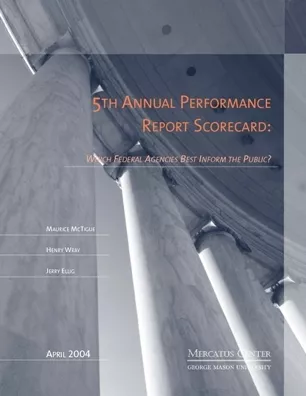Researchers at the Mercatus Center at George Mason University conducted our fifth annual evaluation of the performance and accountability reports produced by Cabinet departments and other agencies.

Summary
The federal government spends 20 percent of what America produces - more than $2.1 trillion in fiscal 2003. Citizens and their elected representatives deserve to know how effectively government agencies use these vast resources.
During the past decade, both Congress and the executive branch have taken significant steps to improve accountability for these expenditures. The Government Performance and Results Act of 1993 requires agencies to produce strategic plans, annual performance plans, and annual performance reports. The purpose of annual performance reports is to identify how much public benefit federal agencies produce for citizens, and at what cost. The purpose of this Scorecard is to encourage improvement in the quality of these reports.
Researchers at the Mercatus Center at George Mason University conducted our fifth annual evaluation of the performance and accountability reports produced by Cabinet departments and other agencies. We employed the same criteria used in our four previous Scorecards. Our scoring process evaluates:
- How transparently an agency reports its successes and failures,
- How well an agency documents the tangible public benefitis it claims to have produced,
- Whether an agency demonstrates leadership that uses annual performance information to devise strategies for improvement.
By assessing the quality of agencies' reports (but not the quality of the results achieved) we wish to learn which agencies are supplying the information that citizens and their elected leaders need to make informed funding and policy decisions.

